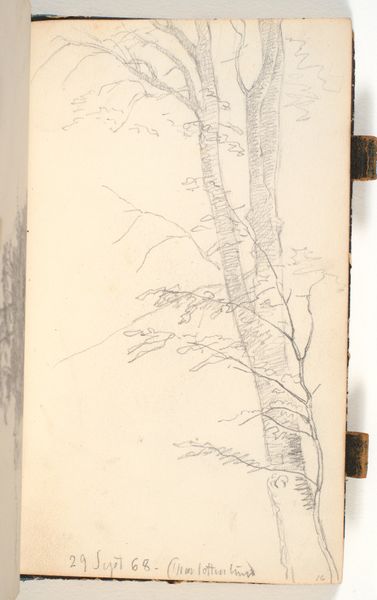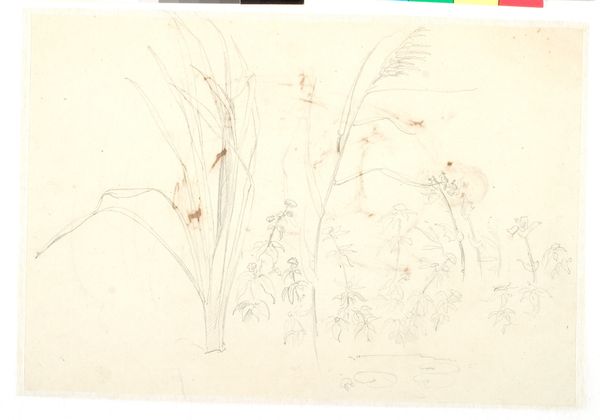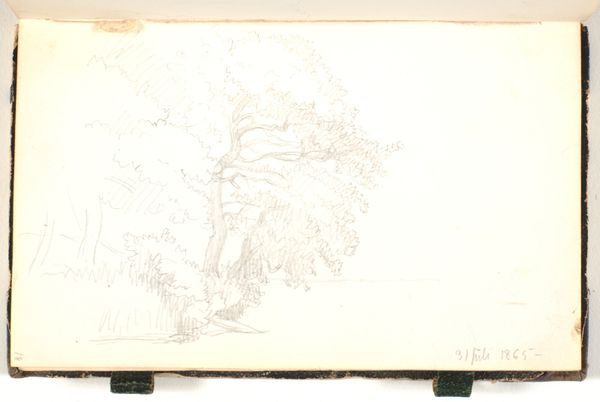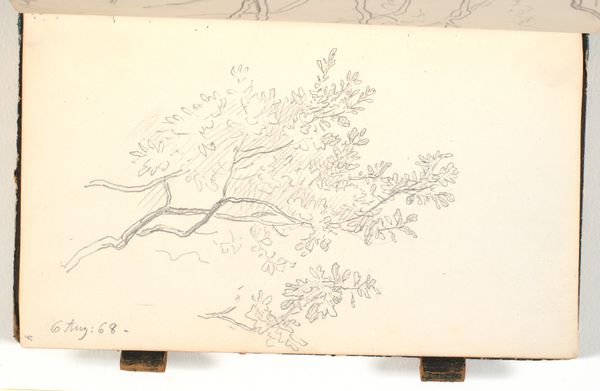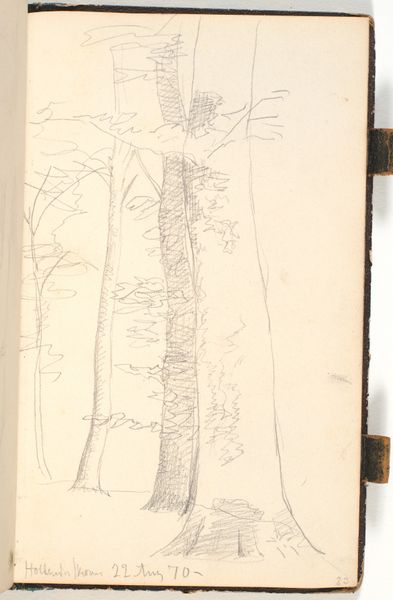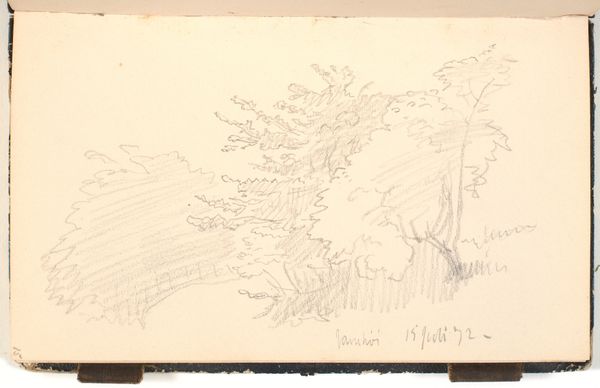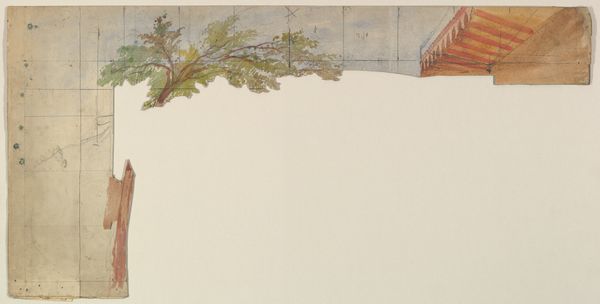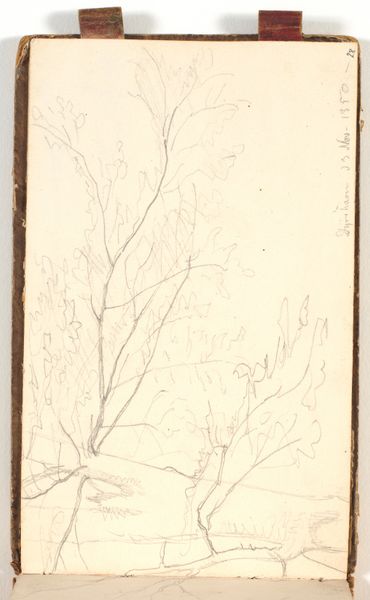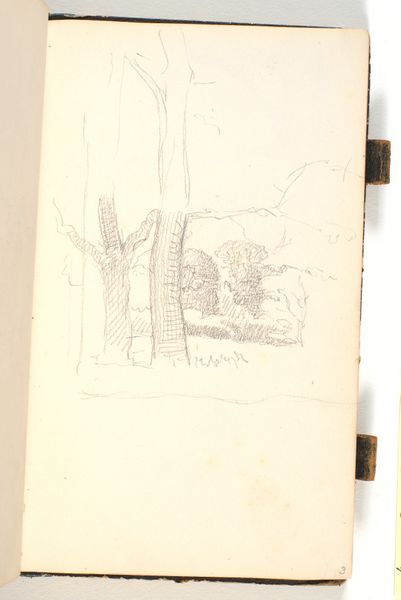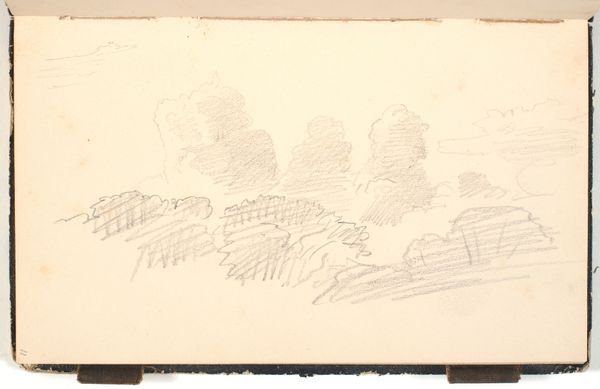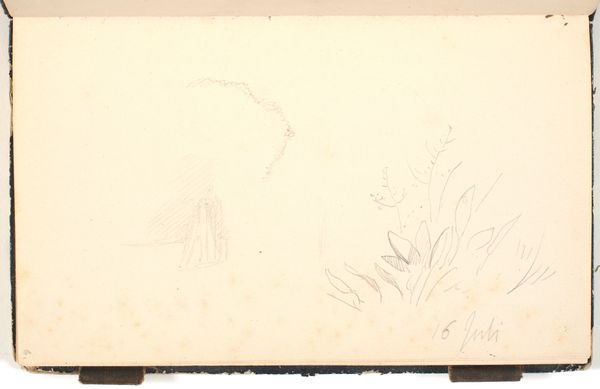
Dimensions: 188 mm (height) x 109 mm (width) (bladmaal)
Curator: Here we have P.C. Skovgaard's 1868 drawing, "Slanke tr\u00e6er i en gruppe," which translates to "Slender Trees in a Group." Executed in pencil, this work captures a fleeting observation of nature. Editor: There's such a gentle quality to this sketch. The almost ghostly rendering of the trees evokes a sense of fragility and vulnerability. The delicate lines almost seem to mimic the fleeting nature of time. Curator: Absolutely. Skovgaard, known for his landscapes, used such studies to develop a deeper connection with the land and his surroundings. This piece resonates with Romantic ideals—pondering the majesty of the landscape and humankind’s relationship to it. Consider also how the sketch aesthetic has historically been coded and understood as fundamentally masculine. Editor: That’s interesting, to think of sketching and landscape painting as masculine endeavours in contrast to still-life work. This rendering, however, to me feels vulnerable precisely because of its stark, almost bare quality. Its deliberate roughness challenges any notions of idyllic beauty; nature here seems stripped of its pretenses, its very essence rendered accessible. Do you see an echo in feminist and queer ecological work around reclaiming the wilderness? Curator: I can definitely see connections to current explorations into the historical perception of nature within different contexts, especially to the current debates concerning environmental ethics and the non-consensual appropriation of resources. Skovgaard certainly wouldn’t be aware of today’s socio-political situation and of today's critique surrounding the Anthropocene, but this pencil sketch could possibly act as a mirror reflecting an increased concern for a sustainable and ethically just way of representing nature. Editor: Looking at "Slanke tr\u00e6er i en gruppe", I appreciate how it provides such insight into the process, and perhaps Skovgaard’s feelings, as much as the subject. It prompts a reflection on nature’s persistence, as well as an ethical evaluation on our approach to nature’s image today. Curator: Indeed, by viewing these "slender trees" we can, even today, reflect on how society’s evolving values alter the interpretation and artistic intentions behind artwork.
Comments
No comments
Be the first to comment and join the conversation on the ultimate creative platform.
